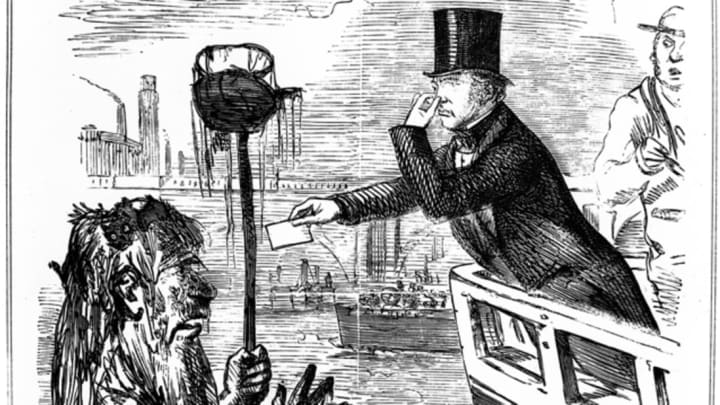As we’ve discussed before, the past was a disgusting time to be alive. Trash, human waste, and slaughterhouse viscera were once a common sight in the Thames river. And if you weren’t close enough to see the debris being chucked into the water, you could definitely smell it.
London’s signature stench made headlines in the summer of 1858, when smell levels went from unpleasant to unbearable. The curtains at Parliament were treated with chloride of lime to block the odor, and when that didn’t work, some government offices were closed. As one parliamentary transcript reads, "Gentlemen sitting in the Committee Rooms and in the Library were utterly unable to remain there in consequence of the stench which arose from the river."
What was the culprit behind the summer-long reek streak? The recently invented flush toilet may have been to blame. Still in its early stages, the technology produced too much raw sewage for the river to handle. The congestion turned the already-polluted Thames into a festering cesspool.
To get the full story behind this smelly chapter in history, watch the video below from Today I Found Out.
[h/t Today I Found Out]
